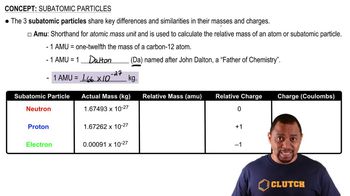Here are the essential concepts you must grasp in order to answer the question correctly.
Nuclear Reactions
Nuclear reactions involve changes in an atom's nucleus and can result in the transformation of elements. They typically include the emission or absorption of particles such as protons, neutrons, and alpha or beta particles. Understanding the types of nuclear reactions, such as fusion and fission, is essential for balancing nuclear equations.
Recommended video:
Balancing Nuclear Equations
Balancing nuclear equations requires ensuring that both the mass number and atomic number are conserved. This means that the total number of protons and neutrons before the reaction must equal the total after the reaction. Identifying the missing particle involves calculating the difference in mass and atomic numbers between the reactants and products.
Recommended video:
Balancing Chemical Equations
Types of Particles in Nuclear Reactions
In nuclear reactions, various particles can be involved, including protons (p), neutrons (n), and alpha particles (α). Each particle has specific properties, such as mass and charge, which influence the outcome of the reaction. Recognizing these particles is crucial for determining what is missing in a nuclear equation.
Recommended video:
 Verified step by step guidance
Verified step by step guidance


